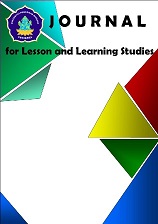The Use of Problem-Based Learning to Improve Higher Order Thinking Skills of fifth-Grade Students
DOI:
https://doi.org/10.23887/jlls.v7i3.81563Kata Kunci:
Elementary School, Higher Order Thinking Skills (HOTS), Problem-Based Learning (PBL), Science Learning, Fifth Grade StudentsAbstrak
Education is expected to produce graduates who can compete and have 21st-century skills. The low ranking of Indonesian students from the results of PISA and TIMMS proves that learning is still not optimal for developing Higher-Order Thinking Skills (HOTS). This study aims to determine the influence of the Problem-Based Learning (PBL) model on HOTS in science learning for grade V elementary school students. This study uses a pretest-posttest design and is a type of quasi-experimental research. The research subjects were grade V students. Cognitive problems function to measure students' (cognitive) knowledge starting from C4 (analysing), C5 (evaluating), and C6 (creating). Meanwhile, observation sheets are used to see the process of critical thinking, creative thinking, reasoning, and decision-making skills in learning activities. The data analysis technique uses descriptive analysis techniques and t-test inferential statistical analysis techniques. The findings from the test results showed that there was a significant difference between the HOTS learning outcomes given in HOTS using PBL and students who did not use PBL. In line with the test results, the findings of the observation results also show that the HOTS ability in students who use PBL is higher than the HOTS ability in students who do not use PBL. This study provides strong empirical evidence that the PBL model can be an effective strategy to improve students' HOTS abilities.
Diterbitkan
Cara Mengutip
Terbitan
Bagian
Lisensi
Hak Cipta (c) 2024 Monika Handayani, Rif'at Shafwatul Anam

Artikel ini berlisensiCreative Commons Attribution-ShareAlike 4.0 International License.
Authors who publish with the Journal for Lesson and Learning Studies agree to the following terms:
- Authors retain copyright and grant the journal the right of first publication with the work simultaneously licensed under a Creative Commons Attribution License (CC BY-SA 4.0) that allows others to share the work with an acknowledgment of the work's authorship and initial publication in this journal.
- Authors are able to enter into separate, additional contractual arrangements for the non-exclusive distribution of the journal's published version of the work (e.g., post it to an institutional repository or publish it in a book), with an acknowledgment of its initial publication in this journal.
- Authors are permitted and encouraged to post their work online (e.g., in institutional repositories or on their website) prior to and during the submission process, as it can lead to productive exchanges, as well as earlier and greater citation of published work. (See The Effect of Open Access)




